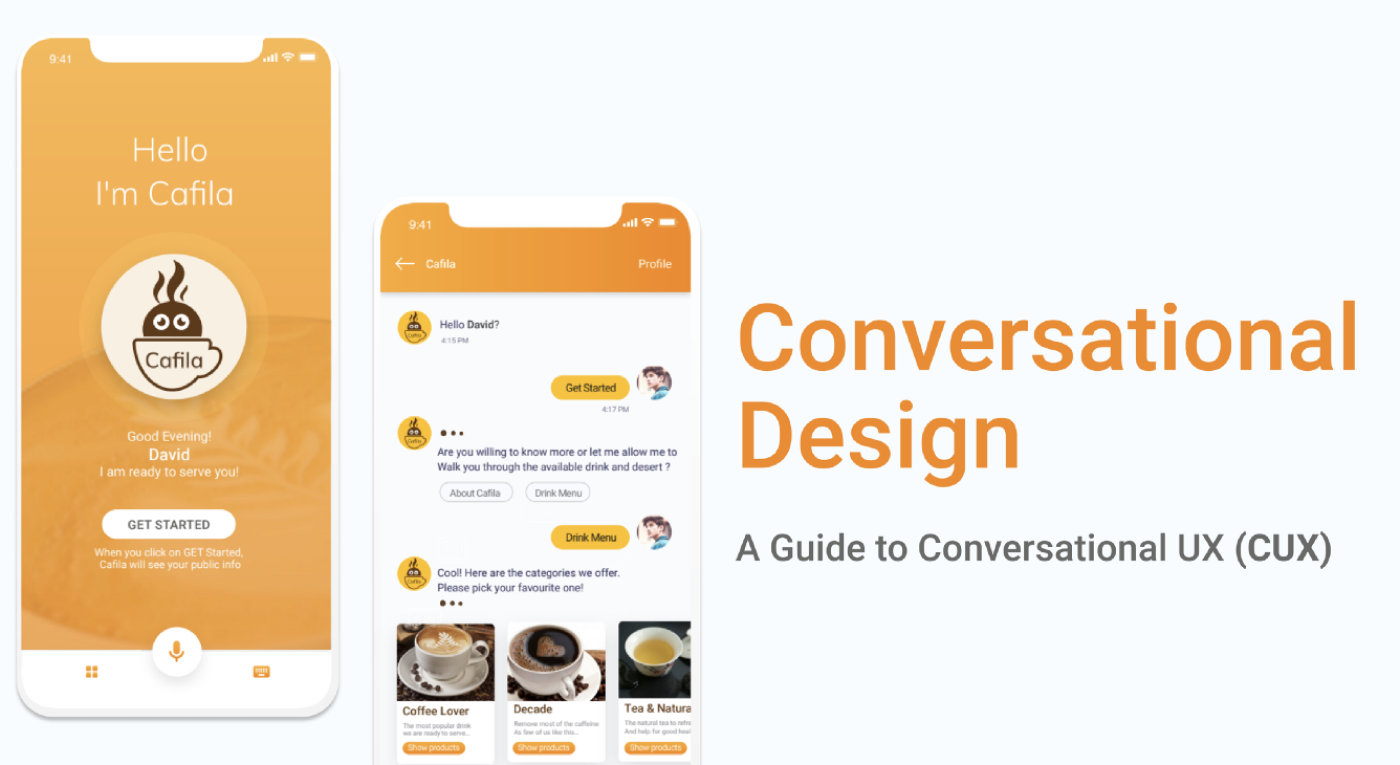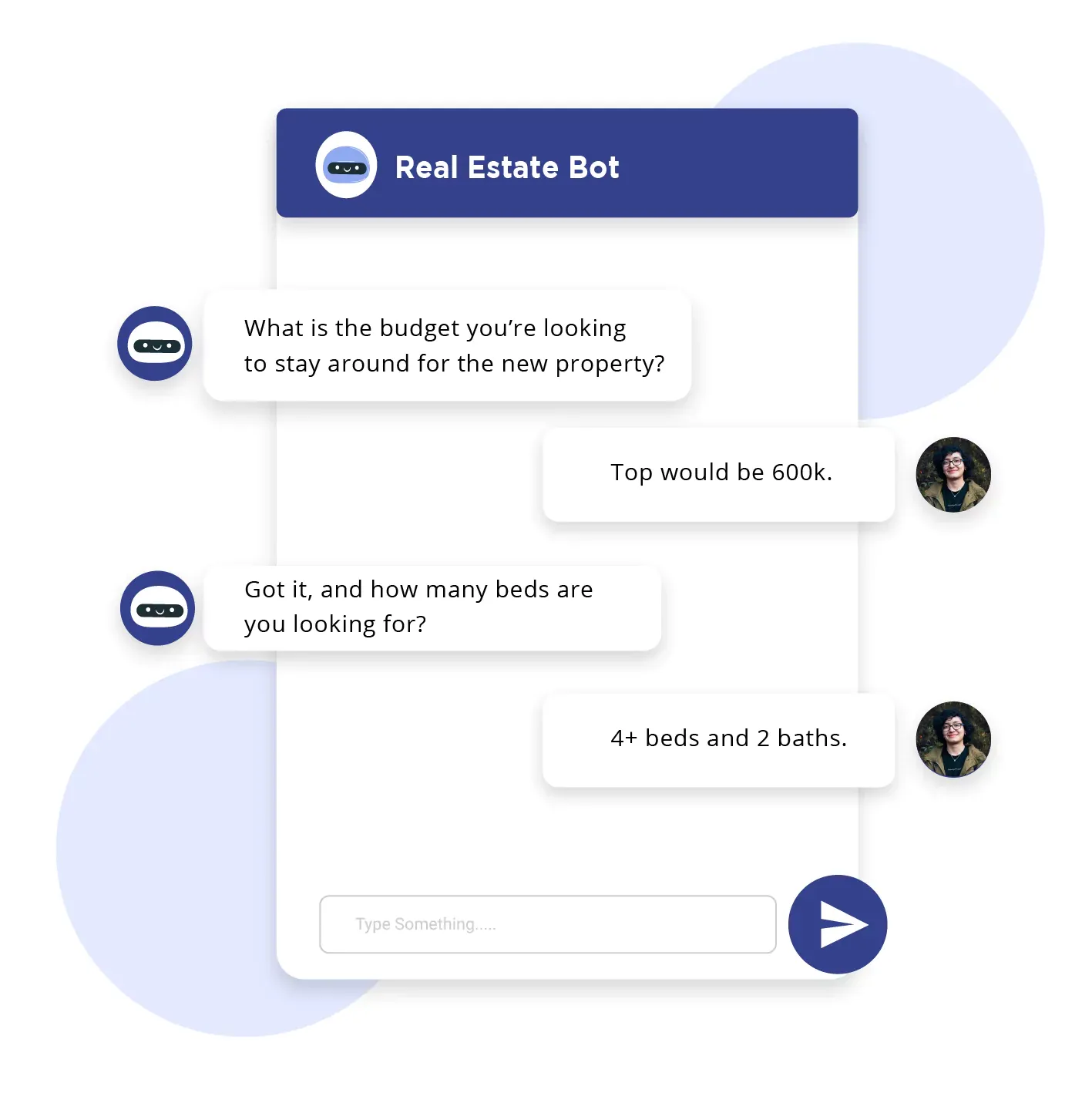What is Conversational UX?

Conversational UX, or Conversational User Experience, is the design and optimization of interactions between users and digital interfaces that rely on natural language communication. It focuses on creating seamless, intuitive, and engaging conversations between users and AI-powered chatbots or voice assistants. The goal of Conversational UX is to make interactions feel as close to human-to-human conversations as possible while providing relevant information, assistance, or services.
A well-designed Conversational UX takes into account the user's context, preferences, and needs, making it easy for them to navigate through a conversation and achieve their desired outcome.
This involves understanding user intent, crafting appropriate responses, and maintaining a natural flow in the conversation.
For example, imagine a user interacting with a chatbot on an e-commerce website. The user types, "I'm looking for a red dress for a wedding." A well-designed Conversational UX would understand the user's intent and respond with relevant options, such as, "I found these red dresses that would be perfect for a wedding. You can filter by size, price, or style to narrow down your choices.
Why do we need Conversational UX?
1. Enhancing User Experience
Let's face it; nobody likes a clunky, confusing interface. Conversational UX aims to make interactions more enjoyable, seamless, and human-like. By focusing on natural language and intuitive design, users can engage with technology in a way that feels comfortable and familiar.
2. Streamlining Customer Support
Forget waiting on hold for hours or typing out lengthy emails. Conversational UX has revolutionized customer support with AI-powered chatbots that can quickly and efficiently answer questions, troubleshoot problems, and even escalate issues to human agents when necessary. It's a win-win situation: customers get the help they need, and businesses save time and resources.
3. Boosting Engagement and Conversion Rates
When users have a positive experience interacting with your brand, they're more likely to stick around and become loyal customers. Conversational UX can help boost engagement and conversion rates by providing personalized, relevant, and timely interactions that keep users coming back for more.
Who Benefits from Conversational UX?
1. Businesses and Organizations
For businesses, Conversational UX can lead to improved customer satisfaction, increased sales, and reduced costs. By making it easy for customers to interact with your brand, you can build stronger relationships and foster loyalty.
2. End Users and Customers
End users also benefit from Conversational UX. Who wouldn't want a smooth and enjoyable experience when interacting with technology? By making interfaces more user-friendly and accessible, Conversational UX ensures that everyone can enjoy the fruits of the digital revolution.
3. Developers and Designers
Finally, let's not forget the creative minds behind Conversational UX. Developers and designers have the exciting challenge of crafting engaging, intuitive, and delightful conversational interfaces. And as this field continues to grow and evolve, there will be even more opportunities for innovation and collaboration.
How does Conversational UX Work?
1. Natural Language Processing (NLP)

We all know that communication is key, and that's where Natural Language Processing (NLP) comes into play. NLP is the magic behind the scenes that allows computers to understand, interpret, and generate human-like language. By breaking down text or speech into words and phrases, NLP enables Conversational UX to respond in a way that feels natural and intuitive. Pretty cool, right?
2. Machine Learning and Artificial Intelligence
Machine Learning (ML) and Artificial Intelligence (AI) are like the dynamic duo of Conversational UX. These technologies work together to enable chatbots and voice assistants to learn from user interactions, adapt to different situations, and improve over time. Think of it as your digital buddy getting smarter with each conversation. The result? More accurate and personalized interactions that leave users feeling impressed and satisfied.
3. User Interface Design Principles
A solid Conversational UX doesn't just happen by chance. It requires thoughtful user interface (UI) design principles to ensure that interactions are intuitive, engaging, and enjoyable. Some key principles include:
Clarity: The interface should be simple and easy to understand.
Feedback: Users should receive timely and relevant responses.
Flexibility: The design should accommodate different user preferences and scenarios.
Consistency: The interface should maintain a cohesive look and feel across various platforms.
When to Implement Conversational UX?
1. Identifying Opportunities
The first step in implementing Conversational UX is recognizing the opportunities where it can make a difference. Ask yourself: Can a chatbot or voice assistant improve user engagement, streamline customer support, or enhance the overall user experience? If the answer is yes, then it's time to explore the world of Conversational UX.
2. Assessing Project Requirements
Before diving headfirst into Conversational UX, it's crucial to evaluate your project's goals, target audience, and technical requirements. By identifying these factors, you can create a roadmap for a successful implementation that meets your users' needs and exceeds their expectations.
3. Integration with Existing Systems
It's essential to consider how Conversational UX will fit into your current tech stack. Will it require new software, APIs, or data sources? Can it coexist with existing tools and platforms? By addressing these questions, you'll ensure a seamless integration that supports your overall business objectives.
Types of Conversational UX
1. Text-Based Conversations
Text-based Conversational UX is all about the written word. Chatbots, messaging apps, and text-based virtual assistants fall into this category. These interfaces allow users to type their questions, commands, or responses, creating an interactive and engaging experience that feels like a real conversation.
2. Voice-Activated Interfaces
"Hey Siri, what's the weather like today?" Voice-activated interfaces, like smart speakers and voice assistants, allow users to interact with technology using spoken language. By leveraging NLP and AI, these interfaces can understand and respond to voice commands, making it easier than ever for users to access information and control devices.
3. Hybrid Solutions
Why choose between text and voice when you can have both? Hybrid Conversational UX combines the best of both worlds, offering users the flexibility to switch between text-based and voice interactions as needed. This approach creates a more versatile and adaptive user experience that caters to a wide range of preferences and situations.
Best Practices for Designing Conversational UX
1. Clarity and Simplicity
Clarity - Ensuring that the messages and information provided by the conversational interface are easy to understand and follow. Avoid using jargon, complex sentences, or ambiguous phrases.
Simplicity - Design the conversation flow to be straightforward, with a minimal number of steps to achieve the user's goal. Keep options and choices clear and concise to prevent confusion.
2. Context-Awareness and Personalization
Context-Awareness - Taking into account the user's current situation, location, preferences, and past interactions to provide a more relevant and meaningful experience. This can include tailoring responses based on time of day, weather, or user history.
Personalization - Customizing the conversational experience for each individual user by remembering their preferences, personal details, and interaction history. This can help create a more engaging and satisfying experience.
3. Error Handling and Recovery
Error Handling - Anticipating and gracefully handling situations where the user provides incorrect or unexpected input, or when the system encounters an error. This can involve providing helpful error messages, offering suggestions, or asking the user to rephrase their input.
Recovery - Allowing users to quickly and easily recover from errors, misunderstandings, or unexpected situations. This can include offering options to restart the conversation, go back to a previous step, or seek help from a human agent.
Applications of Conversational UX
1. Enhancing Customer Support
Conversational UX enables businesses to provide fast, efficient, and personalized customer support through chatbots and voice assistants, improving customer satisfaction and reducing support costs.
2. Streamlining E-commerce
Conversational UX simplifies online shopping by helping customers find products, answer queries, and complete transactions through natural language interactions, increasing sales and customer loyalty.
3. Facilitating Booking and Reservations
By integrating Conversational UX into booking systems, businesses can streamline the reservation process for customers, making it easy to book appointments, flights, hotels, and more through intuitive conversations.
4. Personalized Marketing and Recommendations
Conversational UX allows businesses to engage with customers on a personal level, offering tailored marketing messages, product recommendations, and promotions based on individual preferences and browsing history.
5. Virtual Assistants and Smart Home Devices
Voice-enabled virtual assistants and smart home devices, like Amazon Alexa and Google Assistant, use Conversational UX to provide users with hands-free control, information, and entertainment through voice commands.
6. Employee Onboarding and Training
Conversational UX can be employed to create interactive training programs and onboarding experiences for employees, offering personalized guidance and support through chatbots and voice assistants.
7. Accessible and Inclusive Design
By incorporating Conversational UX into digital products and services, businesses can create more accessible and inclusive experiences for users with disabilities, language barriers, or those who prefer voice interactions.
FAQs
1. What is Conversational UX?
Conversational UX refers to the design of user experiences that facilitate natural, intuitive interactions between users and digital interfaces, typically through text or voice.
2. Why is Conversational UX important?
Conversational UX is essential for creating seamless, engaging, and user-friendly interactions, ultimately leading to higher user satisfaction and increased adoption of digital products.
3. How does Conversational UX differ from traditional UX?
Traditional UX focuses on visual elements and navigation, while Conversational UX emphasizes natural language interactions, often using chatbots or voice assistants to enhance user engagement.
4. What are the key elements of Conversational UX design?
Key elements include understanding user intent, designing clear and concise responses, maintaining context, providing error recovery, and ensuring a consistent, human-like conversational flow.
5. Can Conversational UX be applied to any digital product?
Yes, Conversational UX can be integrated into various digital products, such as websites, mobile apps, and software applications, to improve user engagement and overall experience.


